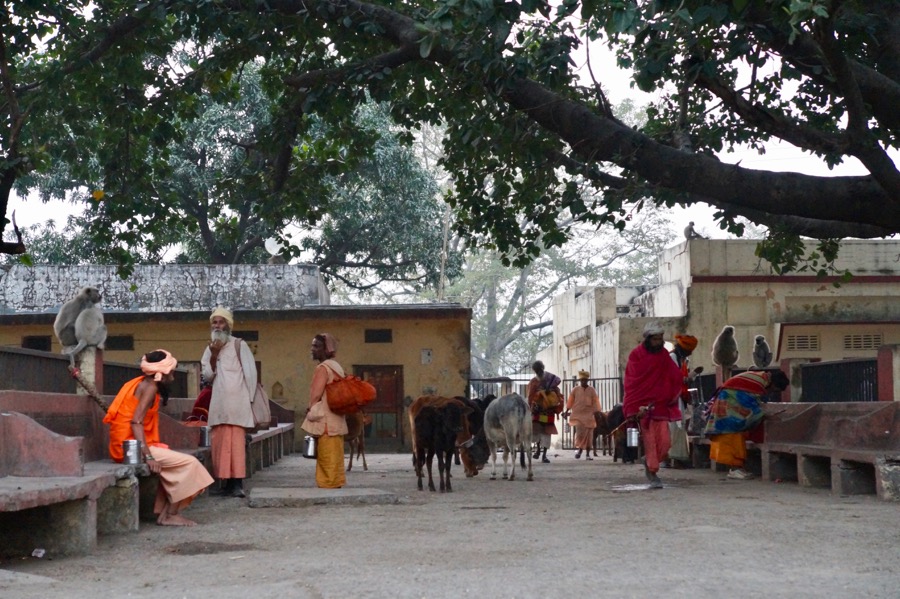I’ve never experienced animals integrated into the daily lives of humans quite like they are in India. It’s normal here, but coming from the west, it’s quite unique.
Cows
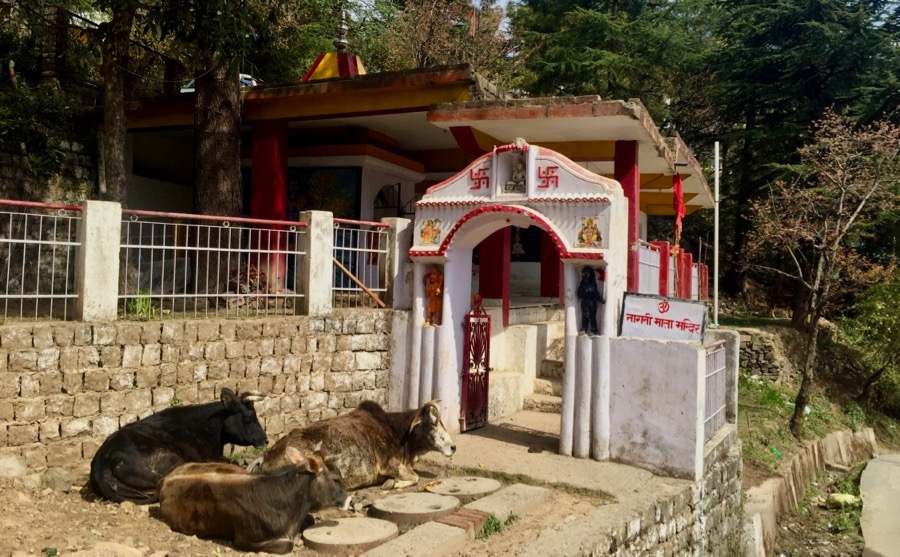
Traditionally, Indians have relied heavily on cows for dairy products and tilling fields. Even their dung is used for fuel and fertilizer. Hindus don’t eat cows. They are revered for their maternal gentleness and qualities of selfless giving.

However, their lives are far from easy. Stray cows endure severe abuse. When no longer producing milk, cows are released to fend for themselves
Depleted soil doesn’t support enough plant life to feed all these stray cows, so they wander the streets in a state of starvation.
I’ve seen cows eating plastic bags, newspapers, cardboard, licking posters off walls. Some cows visit restaurants at the end of the night to beg for scraps of food.
With so many humans struggling to survive, animals are a low priority in India, and people have become desensitized to the suffering around them.
They walk right by an animal lying in the road with a broken leg or festering wound, and there are very few programs to help. Animal Aid Unlimited rescues, spays, neuters animals and educates humans. Peepal Farm is a stray animal recovery center, organic farm, and education center for sustainable living, located in Himachal Pradesh, northern India. Learn more by visiting their YouTube Channel. They need support.
Dogs
In general, India’s dogs are gentle and surprisingly good-natured, even when starved for food and affection. It’s heartbreaking to see so many lost puppies wandering around by themselves. As the bustle of India passing them by, their eyes dart back and forth in search of someone to care. It’s common to see stray puppies eating cow dung. Many of us foreigners carry dog food for such occasions.
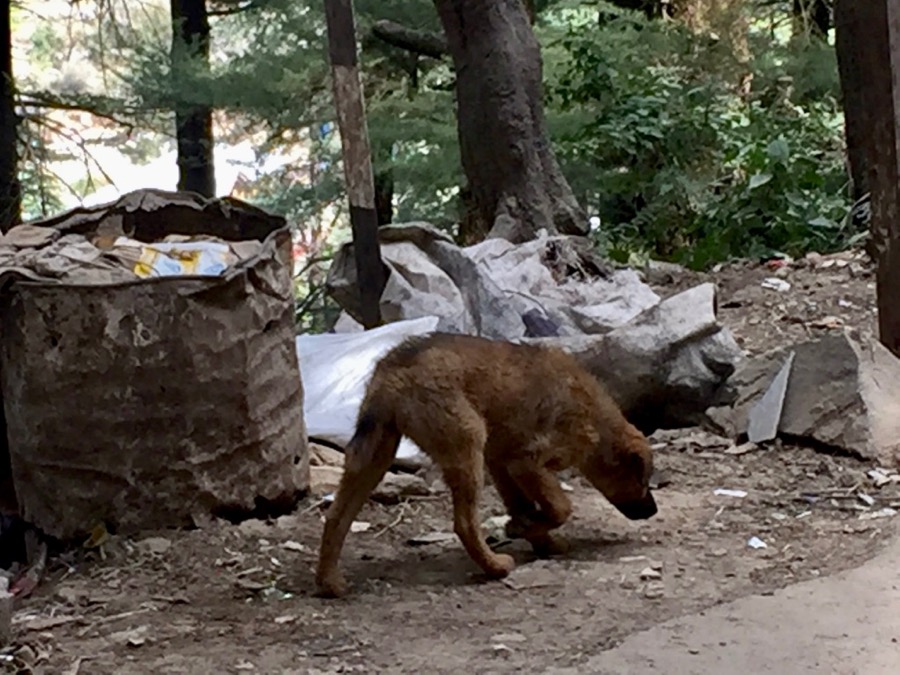
I met a Norwegian woman who returns yearly to participate in a project at Parmarth Niketan Ashram which nurses sick and starving dogs back to health, then returns them to their territory.
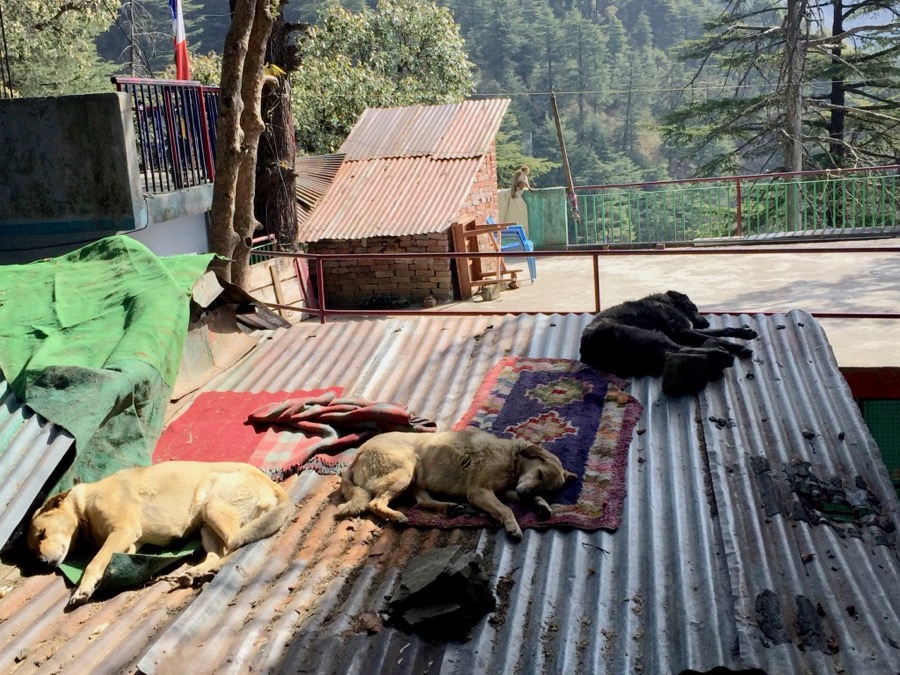
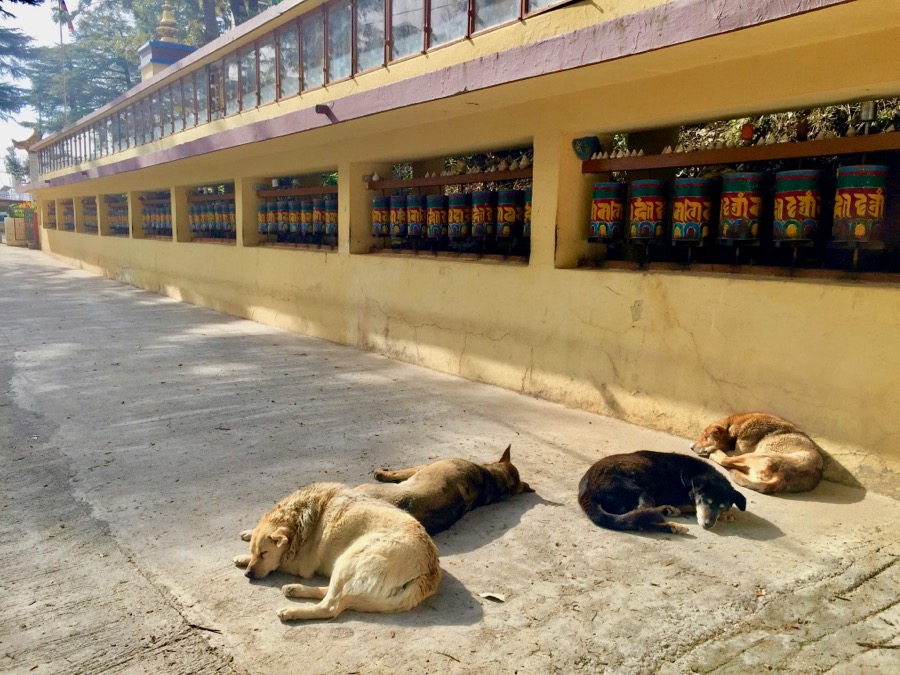
Monkeys
Red-faced monkeys (Rhesus Macaque) are on the ‘least concern’ list of the world’s most threatened species. In other words, they know how to take care of themselves. These aggressive scavengers will help themselves to any food in sight. You can’t just eat while walking down the street in India. Food, including grocery bags, must be hidden out of sight to avoid attack from red-faced monkeys.
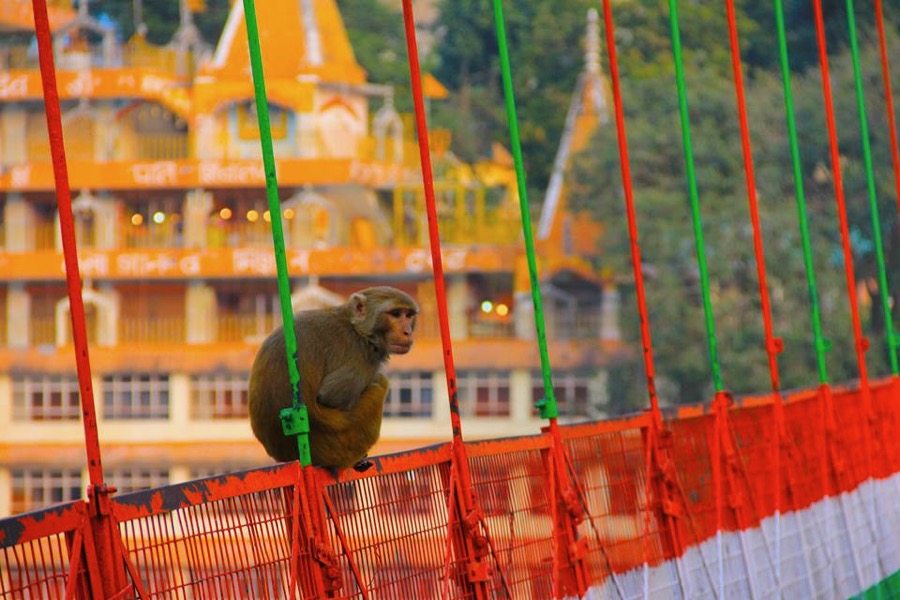
The bridges of Ram and Laxman in Rishikesh are hang-outs for tribes of red-faced monkeys. A narrow corridor, hundreds of feet above the Ganges, is not a fun spot to be cornered by an aggressive monkey.
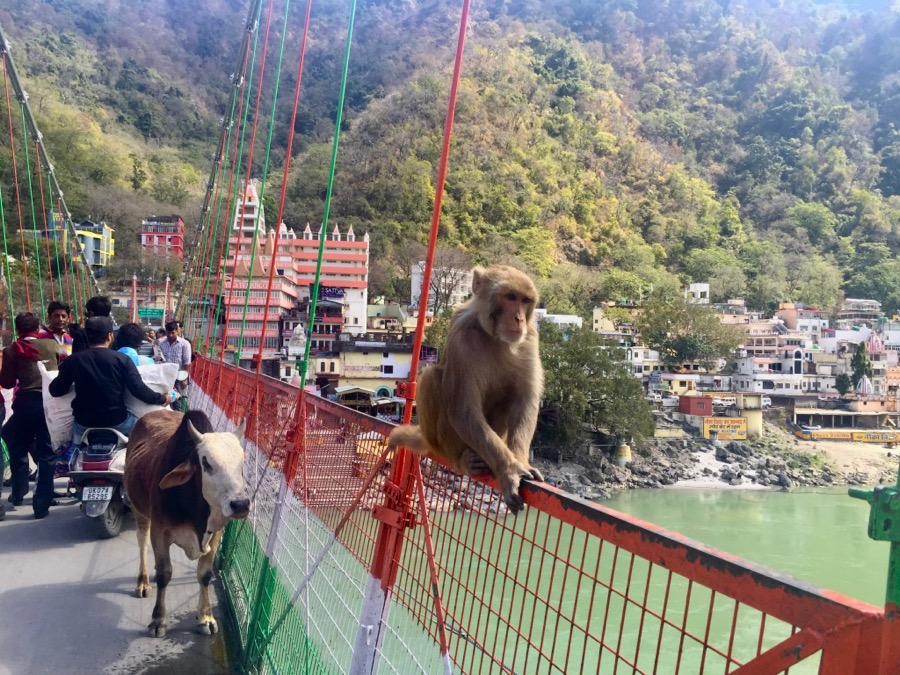
Monkeys are opportunists. If you leave doors open, they’ll walk in and ransack the place. I was snacking on fruit while relaxing in my room one evening when I heard a loud noise in the hall and went to investigate. My back was turned for 5 seconds. When I turned back around, my balcony door was wide open and a cheeky red-faced monkey sat on the balcony finishing my bananas. I guess I’d left the balcony door unlocked, and he must’ve been spying me, waiting patiently to make his move.

Indians chase monkeys off with sticks and screaming like a crazy person. This works for Indians, but it never worked for me. Every time I tried, the monkey charged me bearing teeth and I was the one running away. I’m more scared of them than they are of me, and they know it!
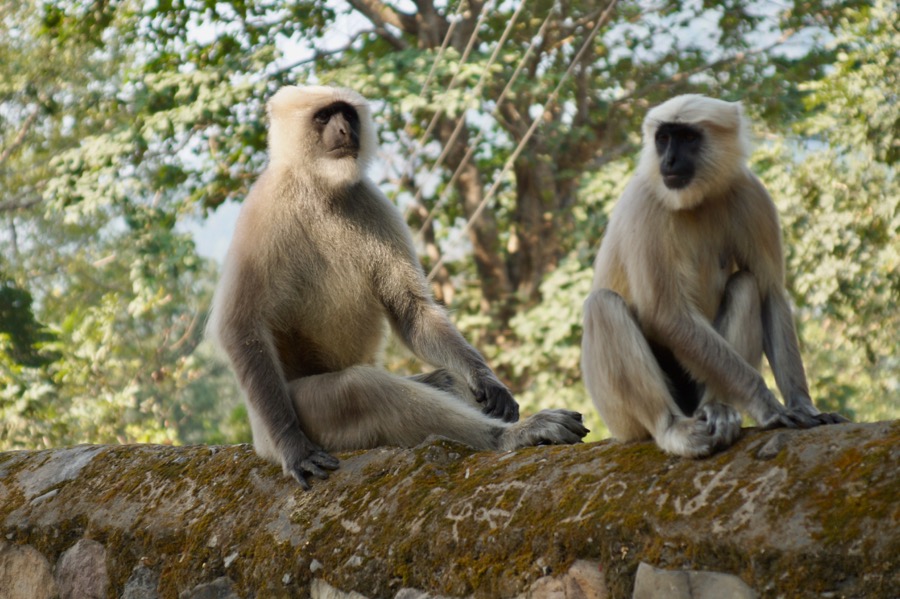
Black-faced monkeys (Grey Lemurs) are lovely! They have a wise, self-assured demeanor and human-like bonds with each other. They’re also happy to visit with humans who are gentle, calm and present.
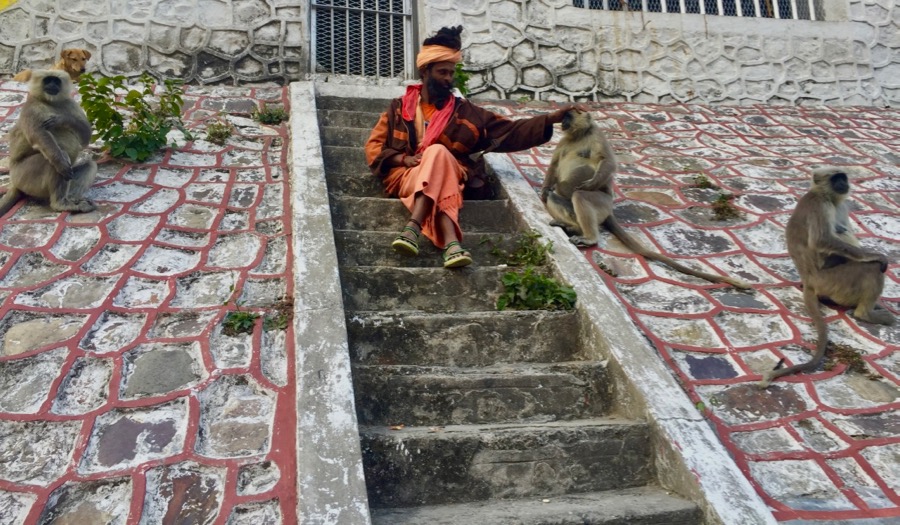
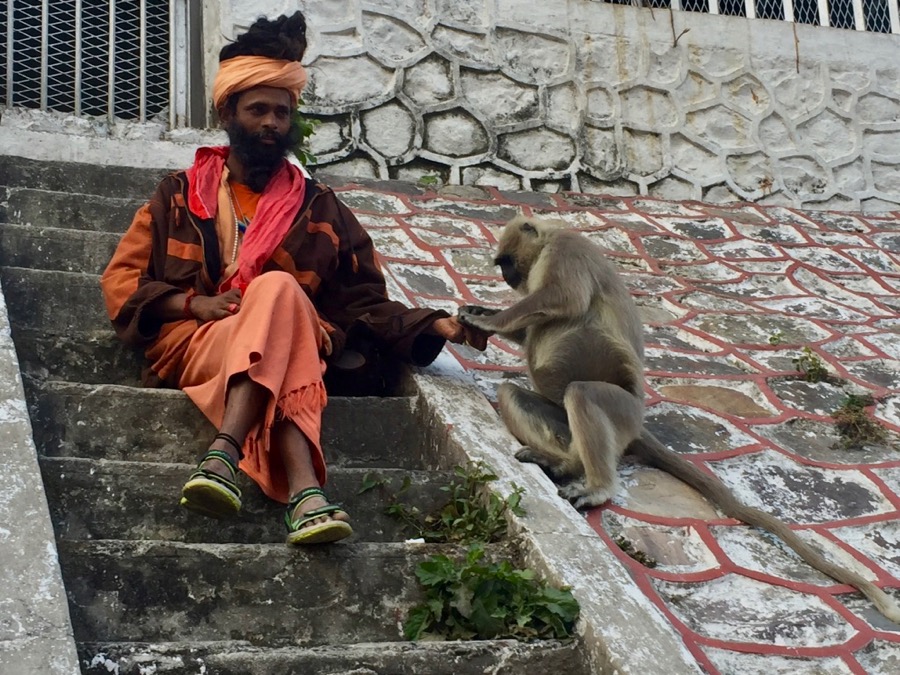
Grey Lemurs do have their priorities though, and they’ll do whatever necessary to acquire food. I watched a Grey Lemur make a huge ruckus as a distraction tactic to swipe a woman’s lunch. He spotted her from a rooftop as she walked by on the street below. Jumping down, he purposely knocked over two motorbikes, then ran directly towards her on his hind legs with arms waving over his head.
She stopped in shock staring at him. He wasn’t bearing teeth, just making a spectacle to distract her, and it worked. In that instant of frozen shock, he nabbed her food and disappeared to a nearby rooftop to eat her lunch. The attack was more comical than threatening.
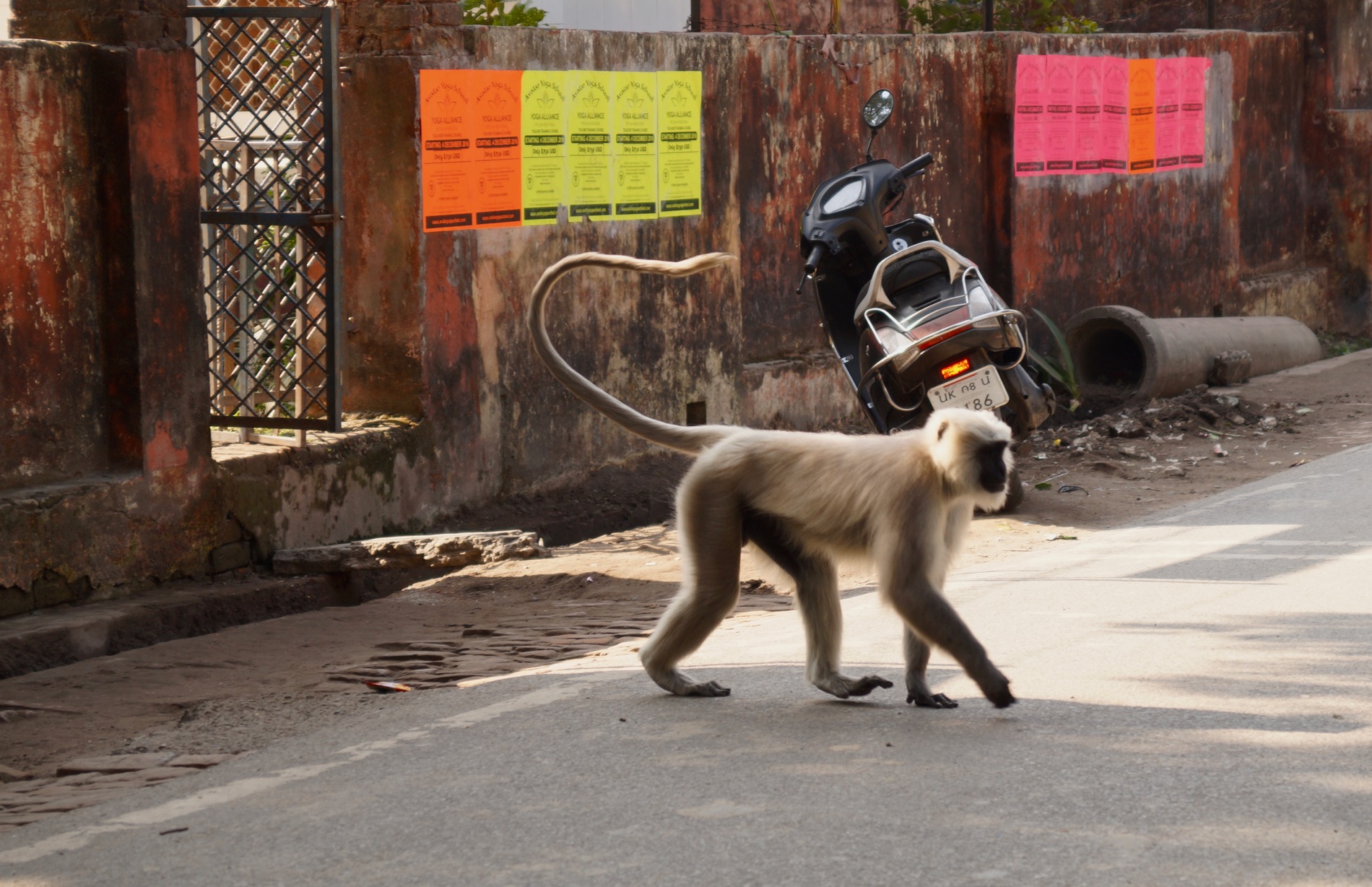
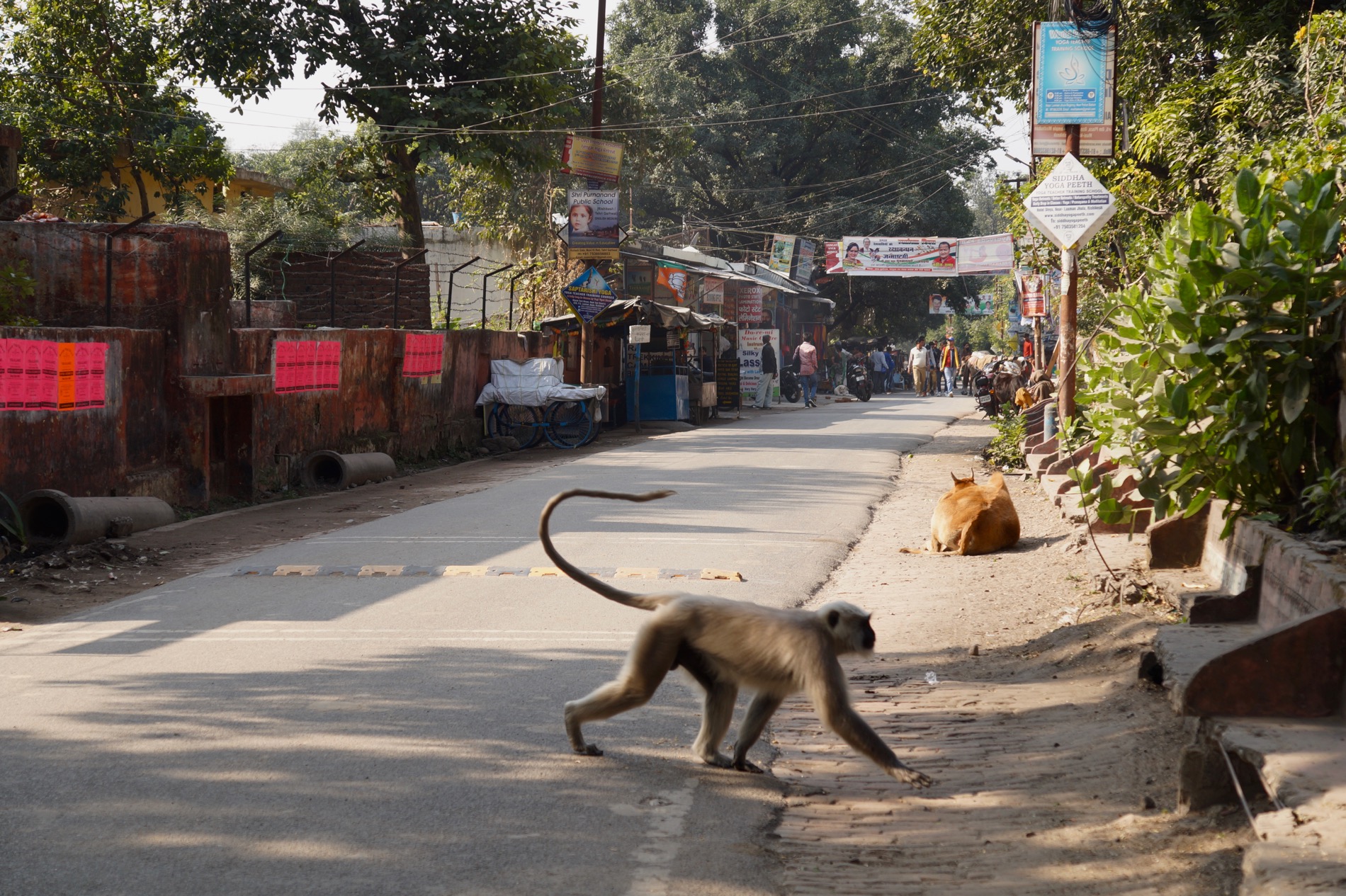
With all these creatures wandering around, there’s an awful lot of poo in the streets. Shop owners in Rishikesh dampen the streets to keep the dust down, but this creates mud puddles of poo which splash when cars and motorbikes pass. It’s inevitable you’ll get sprayed at some point.
Life in India is in your face. It’s raw, real, disgusting, and beautiful all wrapped into one. A far cry from California perfectionism. It’s hard to appear ‘put together’ with poo all over your leg.
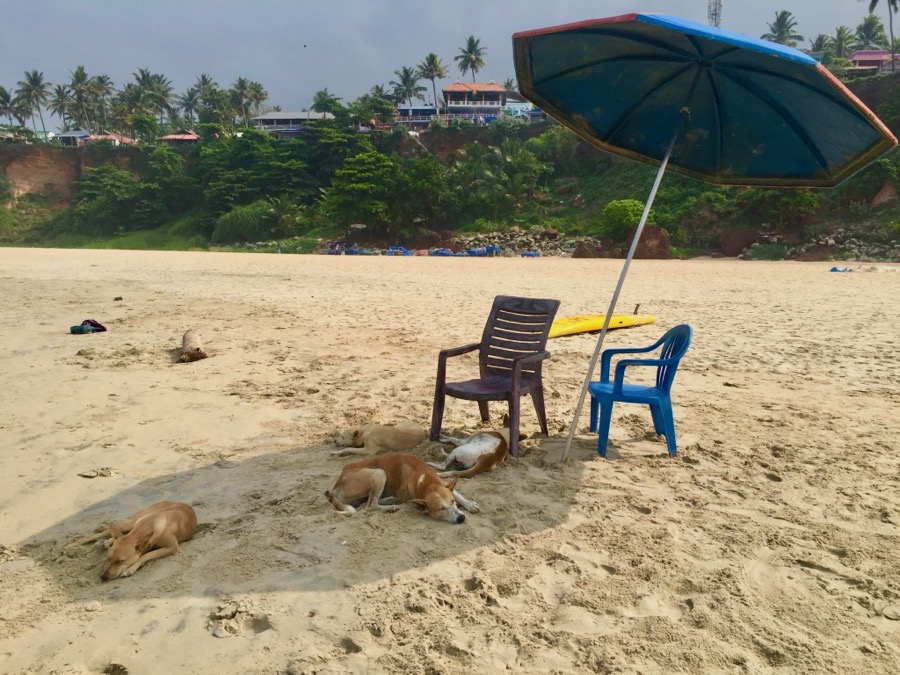
After some tough days of travel, I was greeted by the humidity and ocean breezes of Varkala Beach, Kerala. I put my feet in the Arabian Sea and literally cried with relief to no longer be surrounded by starvation. The southern state of Kerala is known for its relatively strong economy. Humans and animals seem to have their basic needs met.
Cats
I only saw two cats in north India. Both behaved traumatized, as though in constant fear of a predator. But in Kerala, I met many healthy and happy kitties.
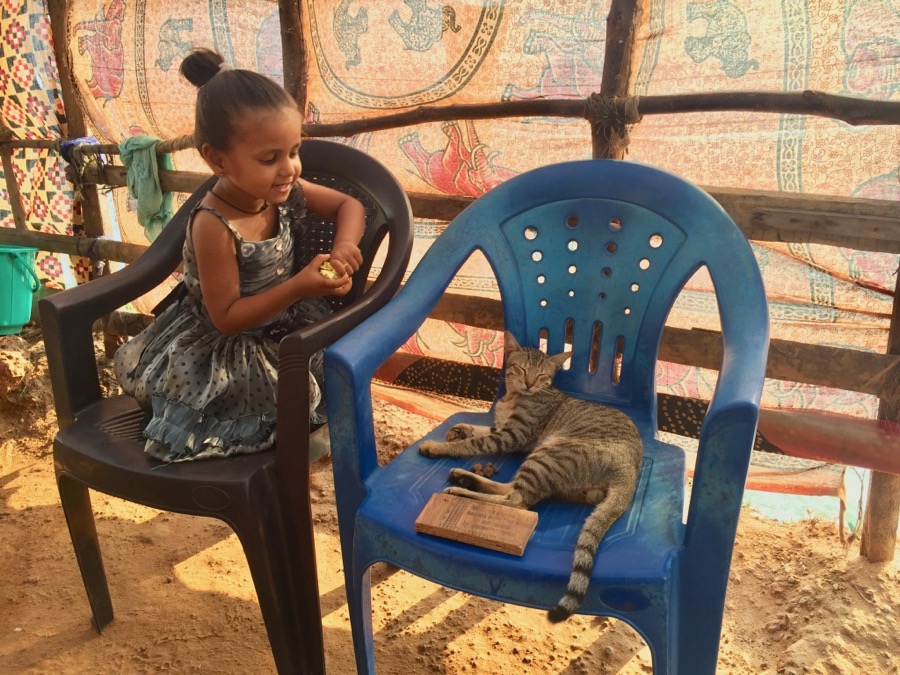
Elephants
Kerala is the first place I met Indian elephants. As a living representative of the Hindu God Ganesha, elephants are a central element in temple ceremonies.
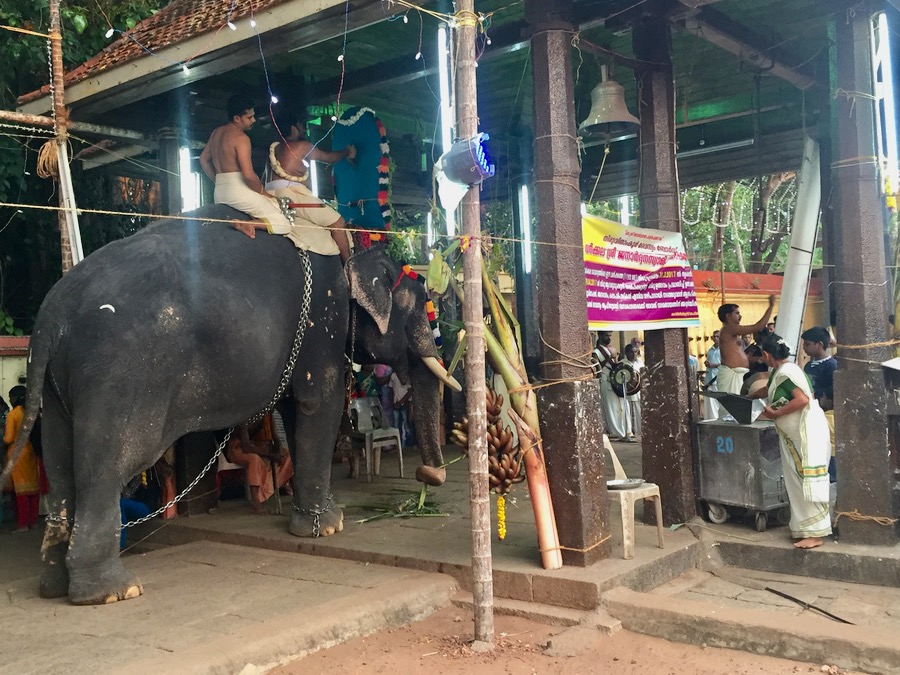
I have a life-long love of elephants and have studied their plight in depth. They’re under attack from all angles. African elephants are getting wiped out by poaching for their tusks (worth more than gold). Asian elephants struggle with declining habitat and forced servitude. Elephants are stolen from their families, or born into captivity, tortured into submission, then chained up in small spaces to be rented out for tourism or ceremonial purposes. It’s slavery.
The largest land mammal, elephants are self-aware non-human people with a highly developed vibrational communication system, complex family structures, and emotional intelligence at a level above many humans.
I tried discussing this complex issue with Hindus on a couple of occasions. I was told that ceremonial elephants are in service to God. I presented my perspective, that ‘God’ is a concept that varies according to culture and religion, but has no significance to an elephant whatsoever. They are gentle giants who’ve done nothing to warrant the cruelty they endure.
I didn’t expect my views to be accepted (especially because many of these people have never had the privilege of leaving their own culture), but I have to speak for those who cannot speak for themselves. Anyone brave enough to educate themselves may gain a deeper understanding of this subject by watching a movie called “Gods in Shackles.”
Even though extremely sensitive to sound, elephants have no choice but to stand still through the chaotic environment.
Crows
Crows live along the Kerala coast much like seagulls do along coastal California. They keep me company every morning, perched in the trees surrounding the rooftop pavilion where I do yoga practice.
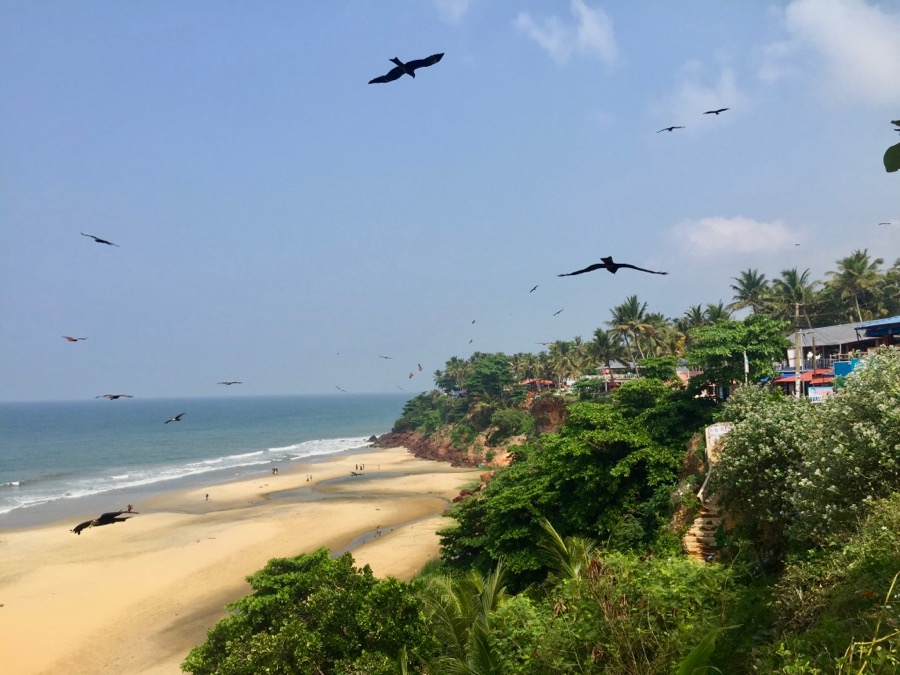
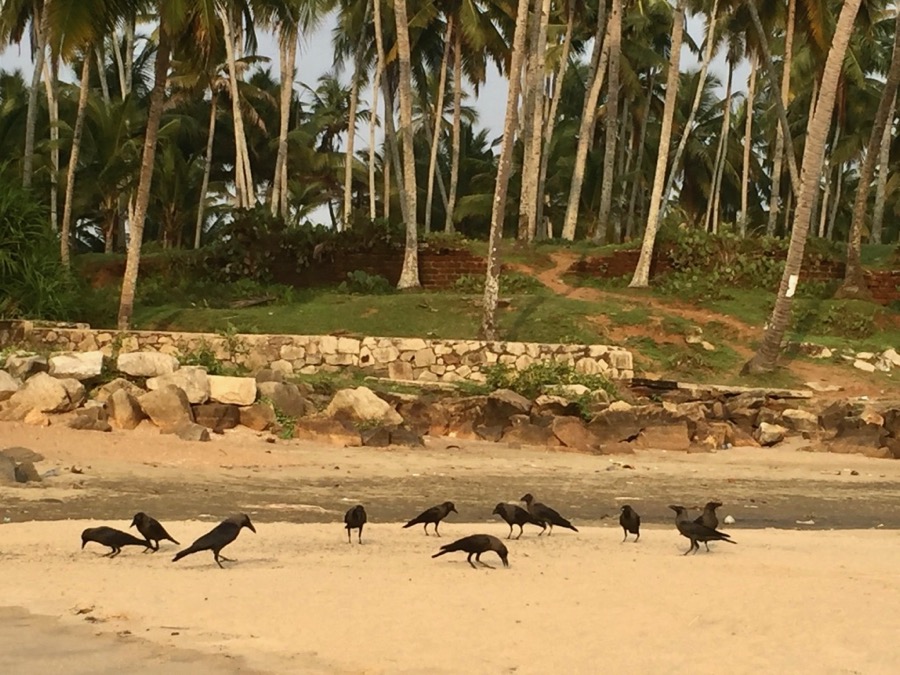
I love animals and they usually recognize me. Animals are sensitive to humans who value them as equal beings.

Happy goats graze the cliffs above the Arabian Sea
I’ll spend my final days in India here in Kerala, and soon be heading onward to Japan, California, and Alaska.

